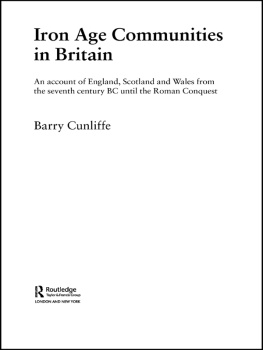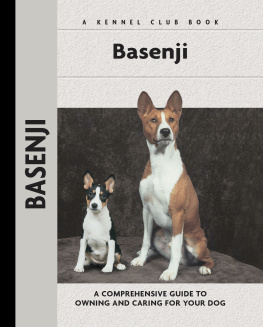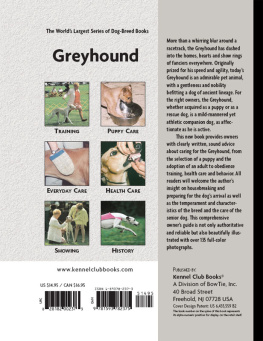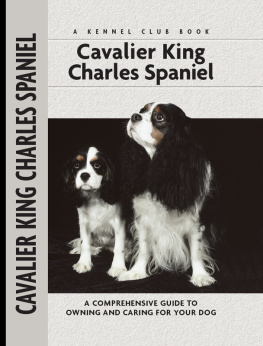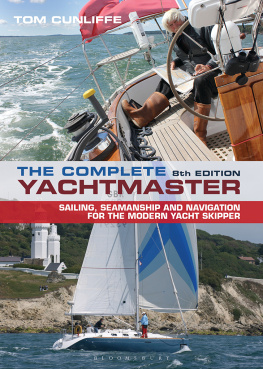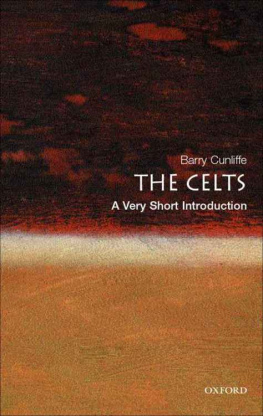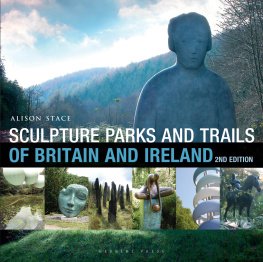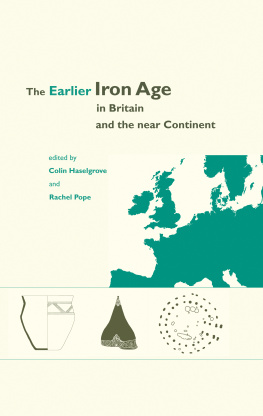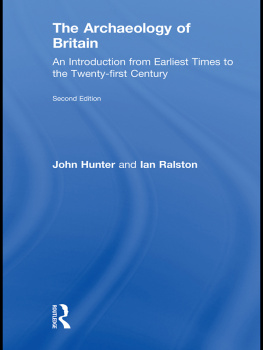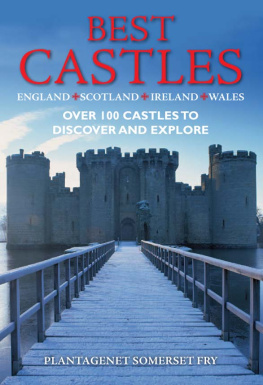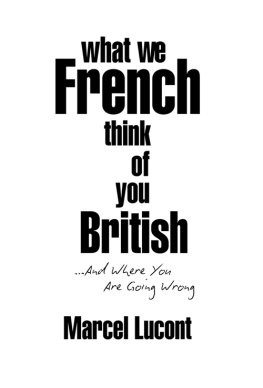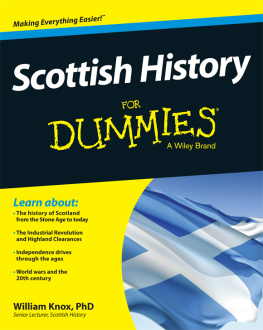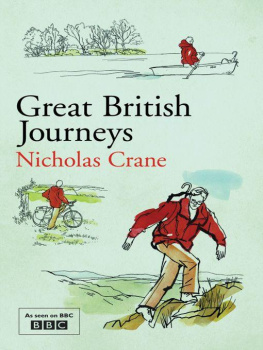Iron Age Communities in Britain
Iron Age Communities in Britain
An account of England, Scotland and Wales from the seventh century BC until the Roman Conquest
Barry Cunliffe
First edition published 1974
Second edition published 1978
Third edition published 1991
Reprinted 1999, 2000, 2001, 2002
Fourth edition published 2005 by Routledge
2 Park Square, Milton Park, Abingdon, Oxon OX14 4RN
Simultaneously published in the USA and Canada by Routledge
270 Madison Ave, New York, NY 100016
Routledge is an imprint of the Taylor & Francis Group
This edition published in the Taylor & Francis e-Library, 2005.
To purchase your own copy of this or any of Taylor & Francis or Routledges collection of thousands of eBooks please go to www.eBookstore.tandf.co.uk.
2005 Barry Cunliffe
All rights reserved. No part of this book may be reprinted or reproduced or utilized in any form or by any electronic, mechanical, or other means, now known or hereafter invented, including photographcopying and recording, or in any information storage or retrieval system, without permission in writing from the publishers.
British Library Cataloguing in Publication Data
A catalogue record for this book is available from the British Library
Library of Congress Cataloging-in-Publication Data
Cunliffe, Barry W.
Iron Age communities in Britain: an account of England, Scotland and Wales from the seventh century BC until the Roman conquest / Barry Cunliffe. 4th ed. p. cm.
Includes bibliographical references (p. ) and index.
1. Iron age Great Britain. 2. Great Britain History To 55 BC. 3. Great Britain Antiquities, Celtic. 4. Britons. I. Title.
GN780.22.G7C86 2004
936.1dc222004003810
ISBN 0-203-32605-9 Master e-book ISBN
ISBN 0-415-34779-3 (hardback)
Who the first inhabitants of Britain were, whether natives or immigrants, remains obscure; one must remember we are dealing with barbarians.
Tacitus, Agricola, xi
Preface
The preparation of this fourth edition of Iron Age Communities has been no mean task. Since the third edition was written fourteen years ago Iron Age scholarship has continued to develop vigorously, generating a flood of new publications ranging from definitive reports of large-scale excavations and major corpora to critical overviews and conference proceedings. In all about 800 publications of varying length and significance have had to be considered, and of these some 380 have been added to the bibliography. Most of the publications are reports of fieldwork and excavation resulting, increasingly, from rescue work in advance of development, and this is only a fraction of what has actually been undertaken and remains unpublished in the grey literature of reports to developers. This exponential growth in data is to be welcomed but it does bring with it problems of selection. To keep this book within reasonable bounds of size many sites which could justly claim to be informative have had to be omitted. The sites specifically referred to here, and listed with principal references in Appendix C, are only a small selection of those available in publication, but they do, I believe, include all the major discoveries upon which our knowledge of Iron Age society is founded.
The first edition of this book was conceived in 1969, written in 1971 and published three years later. Over the last thirty years or so our perceptions of the past have changed dramatically. In the late 1960s we were trying to rid ourselves of old invasionist models which explained change in terms of incoming waves of marauders. In more recent years there have been attempts to get into the minds of the Iron Age communities in hope of being able to view the world as they perceived it. Thus, in the literature, invaders and defences have given way to agency and cosmologies fashions change as the study advances. No doubt in thirty years time future generations of archaeologists will look with mild amusement at our current preoccupations. Yet behind it all lies a rapidly growing base of solid data and it is this, or more correctly a selection of it, that forms the core of this book.
I have retained the broad structure of the text much as it was in the third edition but have made a number of readjustments, particularly to the chapters dealing with regional groupings (chapters 4 and 5), and have now treated the settlement patterns in western and northern Britain in separate chapters (chapters 13 and 14). Throughout, new material has been included, usually as additions but sometimes replacing older texts. To prevent the book from becoming too unwieldy, space has been saved by omitting the accretion of old prefaces, on the grounds of their being an unnecessary self-indulgence, and by leaving out the lists of radiocarbon dates which, to remain of use, would have had to have been doubled or trebled in length. The desultory footnotes have also been excised. The reformatting and updating of the illustrations has allowed some additional economies of space. Yet in spite of all these efforts the book has grown I can only blame the energy and productivity of the many archaeologists whose new researches are daily adding so much.
This new edition was prepared in 2003 and takes note of all published material available to me up to August 2003. I could not have completed this work without the help of the many colleagues who have answered my queries and offered much good advice. They are too many to name but I would particularly like to thank Philip de Jersey for providing the updated maps of coin distributions based on the Celtic Coin Index which he maintains at Oxford and Nigel MacPherson Grant, Peter Couldrey and Nigel Brown for providing unpublished material from their researches on the pottery of Kent and Essex. Finally my heartfelt thanks go to three of my colleagues at the Institute of Archaeology at Oxford who have shared the burden of production. Ian Cartwright has produced a range of new photographic prints, Alison Wilkins has skilfully reformatted the line illustrations and drawn many that are new, while Lynda Smithson has tirelessly laboured to translate my scribbled texts into an immaculate and consistent word-processed text and has insisted on overhauling my idiosyncratic system of bibliographic abbreviations. Without the assurance of their support I would never have embarked upon this fourth edition.
Barry Cunliffe
Oxford
November 2003
Part I
Introduction
1
The beginnings of Iron Age studies
It is not proposed in this chapter to indulge in an extensive and somewhat incestuous examination of the growth of Iron Age studies in Britain simply for the sake of conventional completeness, nor for the specious exercise of holding up to ridicule the views of previous generations who have written on the subject. But some idea of how patterns of thought have developed to their present state is essential, not only because the models of the past have necessarily influenced the interpretations, and indeed the gathering, of the facts, but also because current views may tend to overreact against established dogma.
That an Iron Age existed at all was suggested by the Danish archaeologist C.J. Thomsen, in a book published in 1836, but it was not until G. Ramsauers excavation at Hallstatt, between 1846 and 1862, and the discoveries made at La Tne in 1858, that any permanent chronological divisions could be made. Then followed several schemes: C. Schumacher divided the Hallstatt material into four groups: A (1000800 BC), B (800700), C (700600) and D (600500); while G.O.A. Montelius, working on French discoveries, propounded three periods for the La Tne epoch: I (400250 BC), II (250150 BC) and III (1501 BC). Subsequently P. Reinecke, J. Dchelette, R. Viollier and others evolved finer and differing classifications influenced by new material and by regional considerations. It was against this background that the British finds came to be interpreted.

